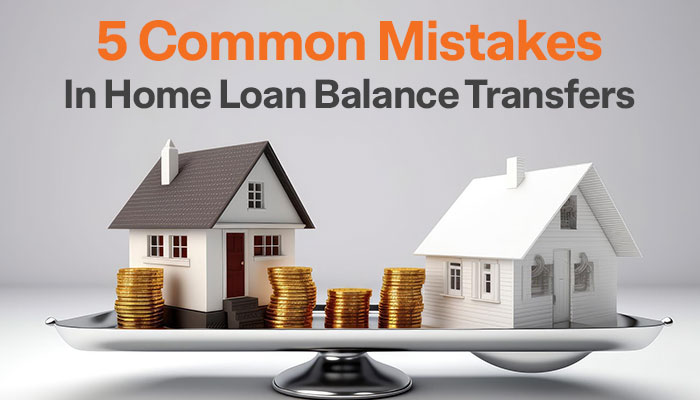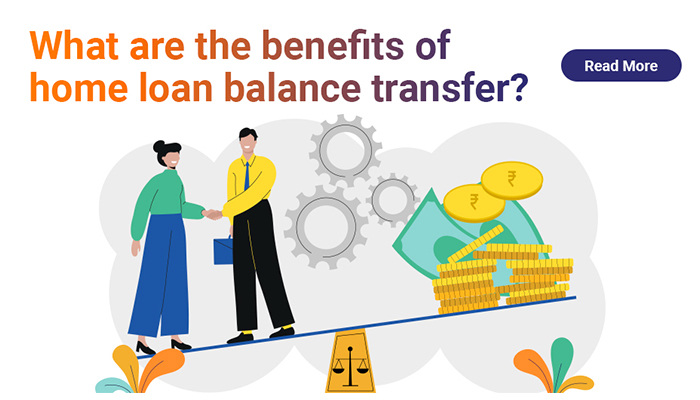Which is better — Top-up Home Loan vs. Balance Transfer?

Already have a home loan but need more funds?
Well, it's not uncommon that sudden financial needs might arise requiring you to avail of loans. However, when you already have a home loan running, then you don’t need to go for expensive financing options like personal loans or credit card facilities. You can seamlessly apply for a top up loan on home loan. However, many borrowers are not satisfied with their existing lenders. In such cases, Balance Transfer emerges as an attractive option. But, what are the home loan balance transfer and top up facilities? Which one is better? Let’s find out!
What are Top Up Home Loans?
The Housing Loan Top Up facility allows you to borrow additional funds over and above your principal home loan. You don’t need to provide any additional security for the home loan top up as your existing home acts as the security for top up of home loan as well. As top up loans are also a form of secured loan, therefore, the top up loan on home loan interest rate are affordable as compared to unsecured lending options.
What is Home Loan Balance Transfer Facility?
Home Loan Balance Transfer facility allows you to change your existing lender. Suppose you are not happy with the services of your existing lender, you can opt for a Balance Transfer Facility with a new lender. In this case, the new lender will pay your principal outstanding with the existing lender. Now, you will have to repay your loan to the new lender. You can also opt for a higher loan amount with the new lender through Balance Transfer plus Top Up facility.
Difference Between Top Up Loans and Balance Transfers
There is a significant difference between the top up loans and balance transfers (with or without top up). These include:
|
Parameters |
Top Up Loans |
Balance Transfer |
|
Loan Amount |
The principal loan amount remains the same. Further, an additional loan is granted in the top up facility over and above the principal loan. Here, your lender does not change. |
Your principal loan amount gets transferred to the new lender. In case you need to apply for a top up, you can ask the new lender to grant top up facilities as well. |
|
Terms and Conditions |
The terms and conditions essentially remain the same as per the policy of the existing lender. |
The terms and conditions as per new lender apply to both your principal loan as well as top up facility. |
|
EMI |
EMI of the principal home loan continues as before. For a top up loan facility, a new EMI begins with a different tenure than your principal home loan. |
Your EMI might change if you apply for the balance transfer due to a change in interest rate and tenure with the new lender. Further, balance transfer with top up facility won’t have two separate EMIs. |
|
Loan Tenure |
The tenure of your principal home loan remains the same while you are free to determine the tenure of your top up loan. The tenure for top up loan will vary depending upon your loan amount and your preferences. |
Most lenders provide the borrowers with an option to change the loan tenure in case of balance transfer (with or without top up facility). Thus, you can increase or decrease your tenure based on your preferences. |
What you should select – Top Up or Balance Transfer?
Whether you should select top up or balance transfer depends upon your preferences and experience with your existing lender. If you are not satisfied with your existing lender’s services, then balance transfer is a viable option because home loans are of a longer duration. Further, you can also benefit from the reduced home loan balance transfer interest rate that many new lenders provide. Top up facility comes in handy in case of balance transfer facilities.
Choosing the Right Lender
Choosing the right lender is crucial for having a good borrowing experience. IIFL Home Loans are a preferred choice amongst borrowers for affordable interest and flexible terms. You can also opt for a balance transfer facility to reduce your per month EMI, change the loan tenure or avail of top up loan transfer facility. If you wish to balance transfer your home loan but are concerned about EMI, you can calculate your EMI in advance using the IIFL Home Loan EMI calculator. Apply for a Home Loan Balance Transfer now!
Frequently Asked Questions
Q1: How to use a home loan EMI calculator?
A: After opening the home loan EMI calculator, you just need to enter the loan amount, tenure and interest rate. You will get the exact loan amount and interest you will have to pay over the tenure of the loan.
Q2: What are the purposes for which we can avail of top up home loans?
A: Top up on home loans comes with unrestricted end-use. You can use the funds for home renovation, medical needs, education etc.
Q3: Is top up loan merged with a home loan?
A: No. Top up loans are not merged with home loans but are granted separately. Thus, it has a separate EMI based on the tenure of the top up loan.
Q4: What is the interest rate on top up home loans?
A: The top up loan interest rates are similar to that of home loans.
Q5: Is balance transfer a good option?
A: Yes. Balance transfer is a good option to reduce your interest rates, change your loan tenure or avail of top up facility.
Tags
Disclaimer: The information contained in this post is for general information purposes only. IIFL Home Finance Limited (including its associates and affiliates) ("the Company") assumes no liability or responsibility for any errors or omissions in the contents of this post and under no circumstances shall the Company be liable for any damage, loss, injury or disappointment, etc. suffered by any reader. All information in this post is provided "as is", with no guarantee of completeness, accuracy, timeliness, or of the results, etc. obtained from the use of this information, and without warranty of any kind, express or implied, including, but not limited to warranties of performance, merchantability, and fitness for a particular purpose. Given the changing nature of laws, rules, and regulations, there may be delays, omissions, or inaccuracies in the information contained in this post. The information on this post is provided with the understanding that the Company is not herein engaged in rendering legal, accounting, tax, or other professional advice and services. As such, it should not be used as a substitute for consultation with professional accounting, tax, legal or other competent advisers. This post may contain views and opinions which are those of the authors and do not necessarily reflect the official policy or position of any other agency or organization. This post may also contain links to external websites that are not provided or maintained by or in any way affiliated with the Company and the Company does not guarantee the accuracy, relevance, timeliness, or completeness of any information on these external websites. Any/ all (Home/ Loan Against Property/ Secured Business Loan/ Balance Transfer/ Home Improvement Loan/ NRI Home Loan/ Home Loan for Uniformed Services) loan product specifications and information that may be stated in this post are subject to change from time to time, readers are advised to reach out to the Company for current specifications of the said (Home/ Loan Against Property/ Secured Business Loan/ Balance Transfer/ Home Improvement Loan/ NRI Home Loan/ Home Loan for Uniformed Services) loan.
 Login
Login






















